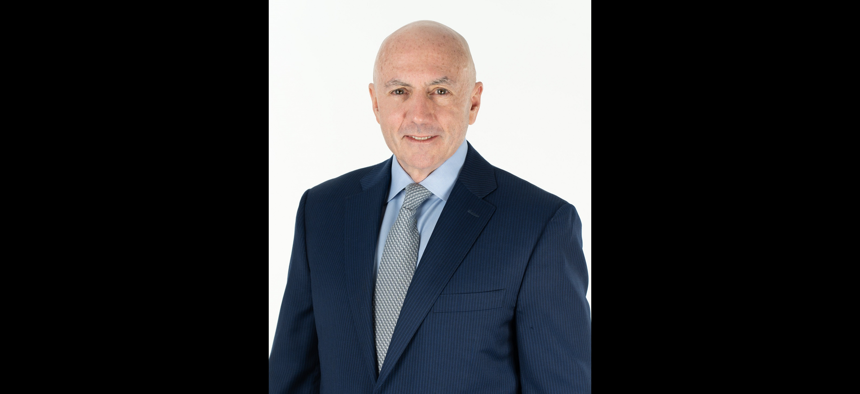How SAP NS2's 'Labs' org works through the question of timing to bring new products to market

“This is the hardest thing in the product business: there are a lot of great ideas, but how many of them can have commercial efficacy,” said Mark Testoni, CEO of SAP National Security Services. Coutesy of SAP NS2
SAP NS2 sees many promising ideas through its 'Labs' incubation hub, but many don't lead to product development and fewer get fielded. Here is how they make those choices and navigate the product lifecycle.
Name a government technology company, and we can show many that have an internal “Labs” organization or something like it as an innovation hub to experiment with and incubate tools before fielding them.
Coming up with a new product or idea is one thing. But the questions of deciding when to field a new technology or functionality, plus how to deploy it, are the most difficult ones to work through for contractor and government customer alike.
“This is the hardest thing in the product business: there are a lot of great ideas, but how many of them can have commercial efficacy,” said Mark Testoni, CEO of SAP National Security Services -- a subsidiary of the German software conglomerate.
SAP NS2 began to stand up its own NS2 Labs organization in 2019 as a hub for collaboration between employees and clients on prototyping, testing and incubation.
The first physical facility opened in Chantilly, Virginia -- then the coronavirus pandemic hit as work began to expand NS2 Labs.
But as Testoni described in an interview, the pandemic almost brought NS2 Labs back to its roots in some ways.
“It’s funny with Labs: we started as a virtual environment, we were kicking around, a lot of it was internal, then we brought some stakeholders and got the physical plant built,” Testoni told me.
A formal ribbon-cutting ceremony for the Chantilly hub has yet to take place. However, Testoni touted the physical location as an “innovation platform and place for people” that connects into the larger ecosystems of NS2’s parent company.
Several hack-a-thon events have taken place there too. One in particular is feeding into work to create a product at the moment called “Chainshield,” which Testoni said is focused on helping customers watch the “health and welfare” of their supply chains.
NS2 Labs has also opened up relationships with academic institutions such as the University of Colorado in Boulder in areas such as “STEAM” – short for Science, Technology, Engineering, the Arts and Mathematics.
There we see part of NS2’s efforts to not just win the talent battle of today, but grow the overall human capital pool for tomorrow and further out.
Applications and other services that are wrapped around cloud computing infrastructures are a core component of SAP NS2’s overall strategy. Which means cloud is core to what NS2 Labs does as well, not just in helping the organization function but the experimentation work with customers.
Harish Luthra, president of NS2’s secure cloud business, told me in the same interview that the NS2 Labs organization heard from a client who wanted to start utilizing one of their products for augmented reality-based learning.
More learning and education is “being done offline now” given the pandemic’s push for remote everything, Luthra said. NS2 Labs is working with that client to see if AR learning could replicate a classroom-like environment for the user, Luthra told me.
“It’s not PowerPoints anymore,” Luthra said. “We really use (NS2 Labs) for experimentation, validation, proofs of concepts. This provides us quick wins.”
But the Chainshield project gets at the biggest question everyone at NS2 Labs faces: when are we ready to take what we created into the real world, and to the scale and risk level the customer is comfortable with.
Talking to customers and industry partners who might be interested in working the problem together is certainly step one. Without naming names, Testoni said NS2 has found willing participants in customers and industry partners to work together on Chainshield.
Future steps of prototyping and testing, if done correctly, lead to creating something more durable. Testoni said NS2 also layers in a product lifecycle management approach to evaluate how the tool performs.
“The thing we have learned is if we’re going to do this, not everything’s going to work, and you have to be able to say ‘Okay this isn’t going to work right now, let’s just pull the plug,’” Testoni said.
For the efforts that NS2 and the Labs organization leave the plug in, they determine if there is a business case for putting that product on another platform and a financial model that works for everyone.
This cautionary statement from Testoni is worth considering: “Only a small percentage of these things are going to actually make it.”
But also consider this statement from Luthra on how pulling the plug is not always permanent and the development process is not always linear.
“In coming up with ideas, when people get together: one plus one is equal to 11 not two,” Luthra said. “We may go in thinking one thing, we may come out of it with completely different ideas.”


